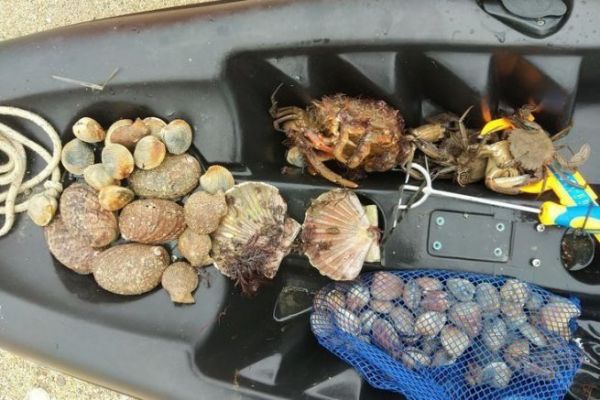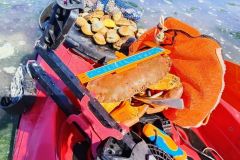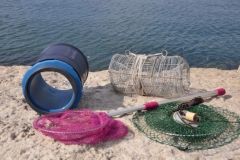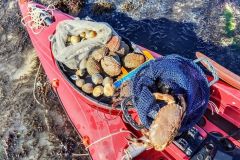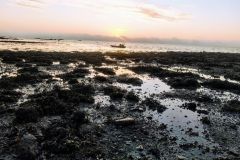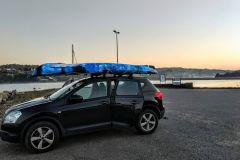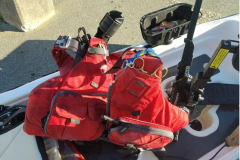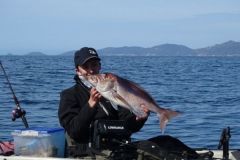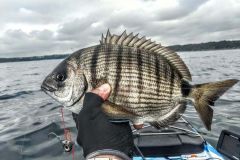117 for the highest coefficient
The weather allowed us to take out the kayaks. It's a safer way of getting to more remote spots. It allows us to move from one pebble to the next, as the foreshore is uncovered. As usual, on these 3 days of high tides, we were able to pick a number of species which added to the pleasure of the table when we returned from our pickings. Big sleepers, curlers, spiders, abalone, scallops, prairies, clams, clams... Very pretty seafood platters.
In addition to these pickings, I'm going to take a look at 3 species, two of which are uncommon in the Brest bay. It's also one of the pleasures of shore fishing, to open your eyes and discover.
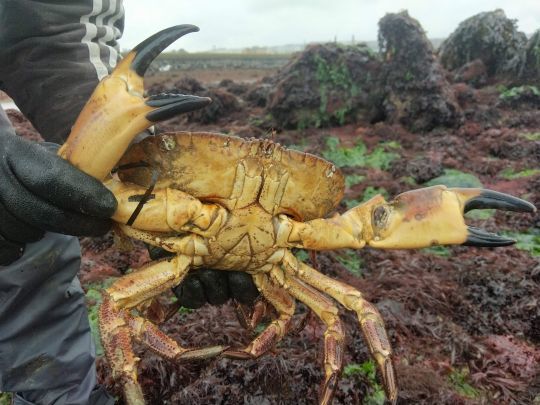
Red tripterygion
A small, elongated fish with a pointed head. Its color ranges from beige to brown, passing through red. 5 darker bars decorate its blanks. The male has a more elongated first dorsal fin ray. In mating season, the male takes on a red color with a black head. It breeds in summer and reaches an adult size of 10 cm. A pond fish, it can be found looking for crabs and abalone under rocks.
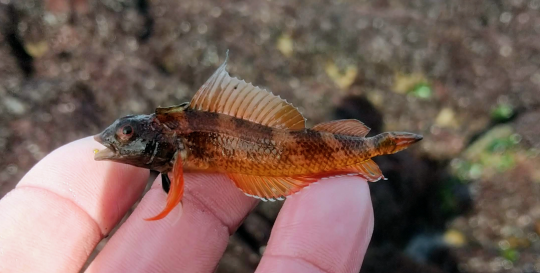
Rock sole (Zeugopterus punctatus)
This is the only flatfish that prefers rocks to sand, and is often found stuck to rocks or on large kelp. It is a flatfish with eyes on the left side. Its adult size is around 30 cm. It has numerous dark spots on its body. The general color ranges from beige-gray to brown, depending on the substrate on which it sticks. Its pelvic fins are fused to the anal fin. The dorsal fin starts near the mouth and extends to the caudal fin. The mouth is quite large. It sports a silky growth on its scales, making it a champion camouflager.
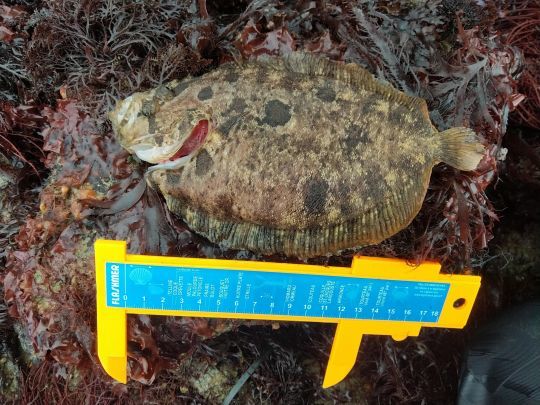
The 3-barbed motelle
The 3-barbed motelle is an elongated fish with a fairly large head. Its body is somewhat smooth and slimy, but less so than an eel. Adult size varies between 25 and 40 cm. It has a large mouth and small, sharp teeth. There is a barbel under the chin and two at the nostrils. Brown to reddish in color, with a light-colored belly. Some specimens have darker or lighter spots. It is also a pond fish, and can survive out of water hidden under its rock during the tide.
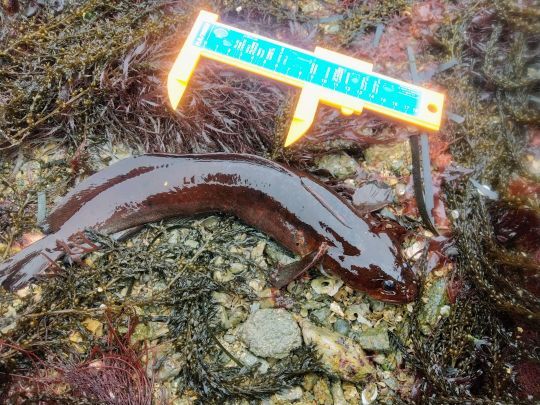
These big tides haven't made us forget the basic principles of foreshore harvesting.
- Respecting mesh sizes and quotas
- Pick up only what you use on the way home
- A good knowledge of the spot, tide times and weather forecasts
- Suitable equipment, including the indispensable tide gauge
- And to finish off the pleasure of sharing a good seafood platter on the way back with friends or family, the next spring tides are just a month away...
